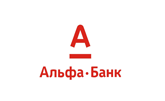
Historically, Italian performers have managed to win the hearts of Russian audience. Perhaps, everybody has heard the songs of Adriano Celentano, Toto Cutugno, an Italian pop music group Ricchi e Poveri, Eros Rammazotti and other Italian singers. The words in the song create its special sound, pleasant for hearing, so that it makes many lovers of Italian music keep interest in the meaning of the song. Choosing of a right way to work with a composition can be of a great help in learning the Italian language. In order to understand how the method works, let’s have a detailed look at one well-known song of Toto Cutugno “L`italiano”.
First of all, let’s mark out the advantages of the method we are supposed to use. So, how can we improve the Italian language skills with the help of songs?
Firstly, this method is a very unique one as we can practice singing Italian songs at any type of lesson: private, group or online Italian lesson .
Secondly, it’s a marvelous opportunity to mastery our listening skills.
Thirdly, the lyrics of the song is presented as an authentic text and it’s not aimed at providing you with educational materials of the target language. That’s why learners have a nice opportunity to work with live language.
In addition, it’s much easier to learn the given material through singing.
Moreover, not only grammar and lexical components are placed in these songs. Сultural and historical aspects are also presented here. Let’s take as an example the song ” Italian” and we will see there such historical aspects as «troppa America sui manifesti» and «un partigiano come presidente»; Italian realias like «spaghetti al dente», «la moviola la domenica in T.V.», «unaseicentogiù di carrozzeria», «caffèristretto» и « Maria сon gliocchipieni di malinconia». Through the song, the person can reveal many interesting sides of the country, the language of which he or she is learning. By means of that, we are provided with an opportunity to gain an insight into the local way of life.
And, finally, songs can bring variety to your lessons. They give you a broader look at different topics, connected to music, some characteristic features of the language and any other aspects.
So, choose the right song, add it to one of your lesson plans and you will see that it will serve as a helpful tool for learning the language. Now let’s see how it works.
The first step is the right choice of the song. I personally think, you should meet the following criteria:
- The song should be popular with students to make them take a great interest in it.
- Before giving the text of the song, check the level of its complexity. It has to be acceptable to students` comprehension. You can also keep the level of challenge high. For example, you can give to your “elementary “students the song ” Italian” providing them with your comments on it, as the text doesn’t seem to be too complex.
- The song has to contain the grammatical and lexical material, taken at the class. With the help of the song we have chosen, you can study such grammar points as “the indefinite/definite articles of masculine and feminine gender, the gender of the nouns and the adjectives” and such turns of speech as “ci sono” and “ne”. If you are studying the topic “ Getting to know Italy” , “Gaining some insights about Italy”, “ Our associations with the country of the target language”, this song will be a suitable addition to your lesson.
- The song shouldn’t be too long. If the text is too difficult and contains repetition, take only the part of the song.
- Surely, the song has to correspond to the interests of the students and their age. The studying process becomes effective when you are related somehow to the topic discussed. The song we are talking about today can be of a great help in all senses, we have mentioned above.
The next stage appears as an organization on working with the song. Tasks and exercises are divided into the following groups- “before”, “during” and “after” listening:
- You can ask your student “music” questions before listening, depending on his/her level, of course: What kind of music do you like? Who is your favourite singer? What Italian singers do you know? What Italian songs do you know? You can also ask them “country” question like What do you associate with Italy? or Name some things which can characterize Italian atmosphere and so on. At the beginner-elementary level it appears to be useful to provide your student with the additional resources such as pictures, realia and others. As an example, you can ask your student to choose the pictures or the words from the list which can be associated with Italy.
- Besides, you can also look through some new words and expressions before listening.
During listening you can do the following exercises:
- To fill in the gaps, for example, to fill in the missing articles if you are learning the usage of articles:
Lasciatemi cantare, con ___ chitarra in mano
Lasciatemi cantare, sono ___ italiano
Buongiorno Italia, ____ spaghetti al dente
E ___ partigiano come presidente; con ____autoradio sempre
Nella mano destra e ______ canarino sopra ____ finestra
Buongiorno Italia, con ___ tuoi artisti, con troppa America
Sui manifesti. Con ____ canzoni con amore e con ____ cuore
Con più donne sempre meno suore
Buongiorno Italia, buongiorno Maria
Con ___ occhi pieni di malinconia, buongiorno Dio
Lo sai che ci sono anch'io?
- To finish up the line in the song. The teacher stops the song for some time while the student is completing the sentence. It’s advisable to use this method working with the chorus of the song which is usually recurring and easy to remember:
- Lasciatemi cantare, con .............. ...........
Lasciatemi cantare una ............... ..........
Lasciatemicantare, perchéne .....................
Sonounitaliano, .................................. - To put verses in a right order.
- To guess the name of the singer if it wasn’t mentioned before.
- To underline the nouns in a singular form (verbs or adjectives of the feminine gender, etc.):
- Buongiorno Italia che non si spaventa,
Con la crema da barba alla menta; con un vestito gessato
Sul blu e la moviola la domenica in T.V.
Buongiorno Italia col caffè ristretto
Le calze nuove nel primo cassetto
Con la bandiera in tintoria e una seicento giù di carrozzeria
Buongiorno Italia, buongiorno Maria
Con gli occhi pieni di malinconia... buongiorno Dio
Lo sai che ci sono anch'io? - To find and correct the mistakes, jokes are welcome here…:
Lasciatemi mangiare, con la forchetta in mano
lasciatemi mangiare una salsiccia piano piano
Lasciatemi mangiare perché ne sono fiero
Sono un italiano, un italiano vero
After listening:
- To clarify some moments in the text
- To look through some figures of speech ( metaphors «la bandiera in tintoria», contractions, sentiment analysis of a phrase and its division into 2 parts and so on)
- Building your own phrases on the basis of the text figures, for example Toto Cutugno è unitaliano. Io sono una russa. Lui è unportogheseetc.
- As a home task, you can ask your student to make a list of associations with Italy and his/her own country. For example, for advanced level the task can sound like this: Toto Cutugno è fierodell’Italia e iosonofieradella Russia perché.. (Toto Cutugno is proud of his country but I`m proud of Russia because…)
So, we had our pleasure to demonstrate you one of the Italian classes you can have with our “Skype- language” teachers .
Study Italian language with a lot of enjoyment!
To book your first trial lesson, fill in this online-request.


























